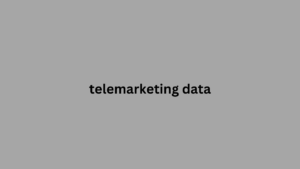B2B are a digital marketing practice that brings credibility and reputation to your company. But also leads! It is also an opportunity for the person who presents them – whether the marketing or sales manager – to position themselves in the sector as an expert. But… How do we ensure that the webinar is a success with audiences and supports objectives such as notoriety or lead generation? To delve deeper and learn more about how to organize a webinar in B2B, we are going to analyze the phases of a webinar and the main KPIs to take into account:
HOW TO ORGANIZE A B2B WEBINAR: PHASES
1) Get registered for your webinar
This is the number one goal of any webinar or virtual event. But it is important to keep in mind that to achieve an acceptable number of registrations, we will have to employ all the digital marketing power at our disposal and have a distribution strategy that incorporates various channels. For example:
LinkedIn Ads. LinkedIn ads are an effective acquisition tactic. They will allow you to reach people in your sector in a targeted manner, but also, thanks to ‘lead forms’ – a LinkedIn feature through which users can register for your event without leaving the platform – you can significantly increase the number of registrations for your event.
LinkedIn Event
Regardless of whether you have a landing page on your website for event registration, it is advisable to create a LinkedIn event that allows you to reach the professional audience of this social network. Not only will you be able to conduct organic campaigns through this page, but your salespeople, Demand Generation team and marketing members will be able to carry out one-to-one invitations to their contacts.
Mailing. Plan mass invitations to your database of prospects and clients. This is a direct and very effective way to get registrations, especially if you have a “healthy” database.
External media. Sending press telemarketing data releases or similar to associations or specialized media. Getting these types of mentions on relevant websites will allow you to reach qualified audiences and can be a perfect acquisition tactic for your webinar.

Driving traffic through all these channels
Will not only help to complete guide to sending a mailing mass emails perfectly improve the number of registrations to your webinar, but in many cases you can also add value to the authority of your site through external links – big work better known as ‘backlinks’ – that point to the landing page of your event. In addition, once the webinar is over, it is advisable to use the same URL to upload the recording of the webinar or offer an ‘on demand’ version of it. In this way, you will not lose the value obtained through all those links to your website.
It is also essential to involve the sales team as well as the customer team. Only in this way, by joining forces with the other departments, will we ensure an interesting registration and attendance rate. For salespeople, it can also be a great opportunity to open subsequent conversations with prospects or key accounts.
2) Get those registrants to become attendees
The goal of every event is not only to get registrations, but also to get final attendees. And although the attendance rate is usually around 30-40% of the total number of registered attendees , there are a number of good practices that will help you achieve that percentage as high as possible.
